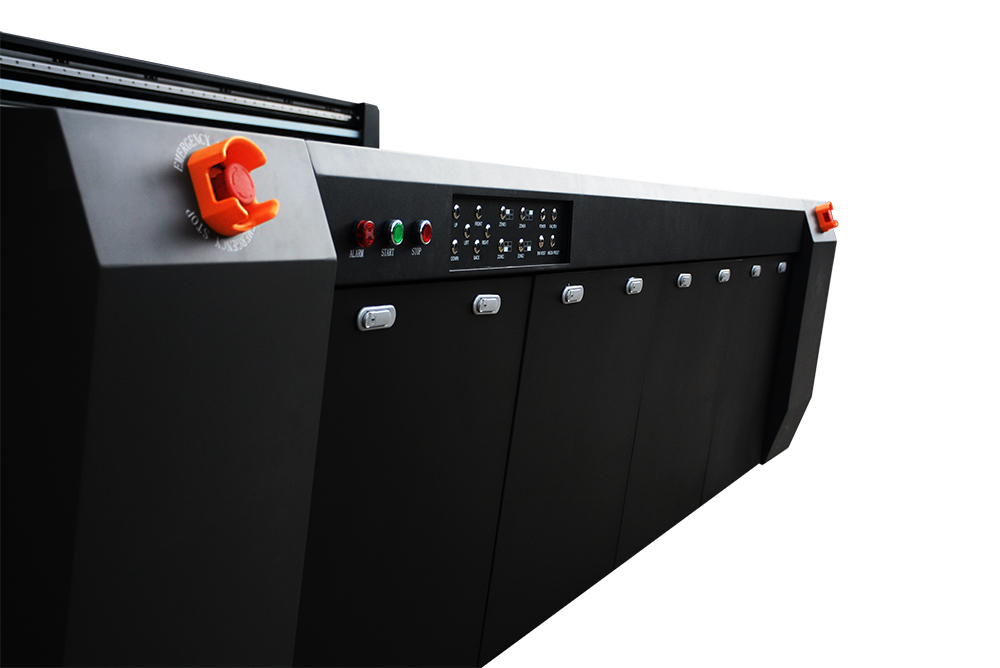Technical Aspects of UV Flatbed Printer Operation: A Comprehensive Guide
Let’s start with the basics. UV printing utilizes ultraviolet light to cure (or dry) ink instantly upon contact with the substrate. This process differs significantly from traditional solvent or water-based printing methods, where drying times can be lengthy and affect the quality of the final print. UV inks are formulated to cure under UV light, resulting in vibrant colors, sharp details, and a finish that’s resistant to fading, scratching, and water damage. Understanding this fundamental principle is crucial as it influences every aspect of the printing process, from ink selection to post-printing handling.

Preparing Your Workspace and Materials
Before diving into the printing process, it’s essential to prepare your workspace and materials. First, ensure your printer is placed in a well-ventilated area, as UV printing can generate ozone, which, in high concentrations, is harmful. Many modern printers come with built-in ventilation systems, but additional air purification may be necessary in some setups. Next, focus on your substrates. UV flatbed printers can handle a wide range of materials, but each may require specific pre-treatment, such as cleaning or priming, to ensure proper ink adhesion. Research the best practices for your chosen materials and invest in quality substrates to achieve the best results.
Mastering Ink Management
Ink management is a critical component of UV flatbed printing. Unlike traditional printers, UV printers use specialized inks that need to be handled with care. Start by understanding the types of UV inks available, such as rigid and flexible inks, each suited for different substrates and applications. Proper storage is key; keep inks in a cool, dark place to prevent premature curing or degradation. During printing, monitor ink levels closely and perform regular maintenance, like nozzle checks and head cleanings, to prevent clogs and ensure consistent print quality. Remember, the right ink management practices can significantly extend the lifespan of your printer and reduce operational costs.
Calibration and Color Management
Achieving accurate color reproduction is paramount in printing, and UV flatbed printers are no exception. Calibration involves adjusting your printer settings to match the color output to your design files as closely as possible. This includes setting the correct color profiles, adjusting density levels, and ensuring proper white balance. Color management software can be a valuable tool in this process, allowing you to preview and adjust colors before printing. Regularly calibrate your printer, especially after changing ink batches or making significant adjustments to your setup. This practice ensures that your prints look consistent and vibrant, meeting or exceeding your clients’ expectations.
Printing Techniques and Optimization
Now, let’s talk about the printing process itself. UV flatbed printers offer a variety of printing modes, from draft quality for quick proofs to high-resolution modes for final prints. Choose the appropriate mode based on your project requirements, balancing speed and quality. Experiment with different print settings, such as layer thickness and pass numbers, to find the optimal balance for your materials and designs. Don’t forget about white ink printing, a unique feature of many UV flatbed printers that allows for printing on dark or transparent substrates by laying down a base layer of white ink first. Mastering these techniques will enable you to produce prints that stand out in terms of both quality and creativity.
Post-Printing Handling and Finishing
The printing process doesn’t end when the design hits the substrate. Proper post-printing handling is crucial to ensure the longevity and appearance of your prints. For some materials, additional finishing steps may be necessary, such as laminating, varnishing, or cutting to shape. UV-cured prints are generally ready for handling immediately after printing, but be gentle with them until any additional finishes have fully cured. Store your finished prints in a clean, dry environment to prevent damage. Remember, the way you handle your prints after printing can make a significant difference in their final appearance and durability.
Maintenance and Troubleshooting
Last but not least, regular maintenance is key to keeping your UV flatbed printer running smoothly. This includes daily checks for ink levels, nozzle health, and media alignment, as well as weekly or monthly deep cleans and calibrations. Familiarize yourself with your printer’s maintenance schedule and follow it diligently to prevent costly breakdowns and downtime. Should you encounter any issues, such as print defects or mechanical errors, consult your printer’s manual or contact technical support for guidance. Troubleshooting skills are invaluable in the printing world, and a proactive approach to maintenance can save you a lot of headaches in the long run.
Conclusion
Operating a UV flatbed printer is a rewarding endeavor that combines technology, creativity, and precision. By understanding the technical aspects of UV printing, from ink management to post-printing handling, you’ll be well on your way to producing high-quality prints that impress your clients and set your business apart.
